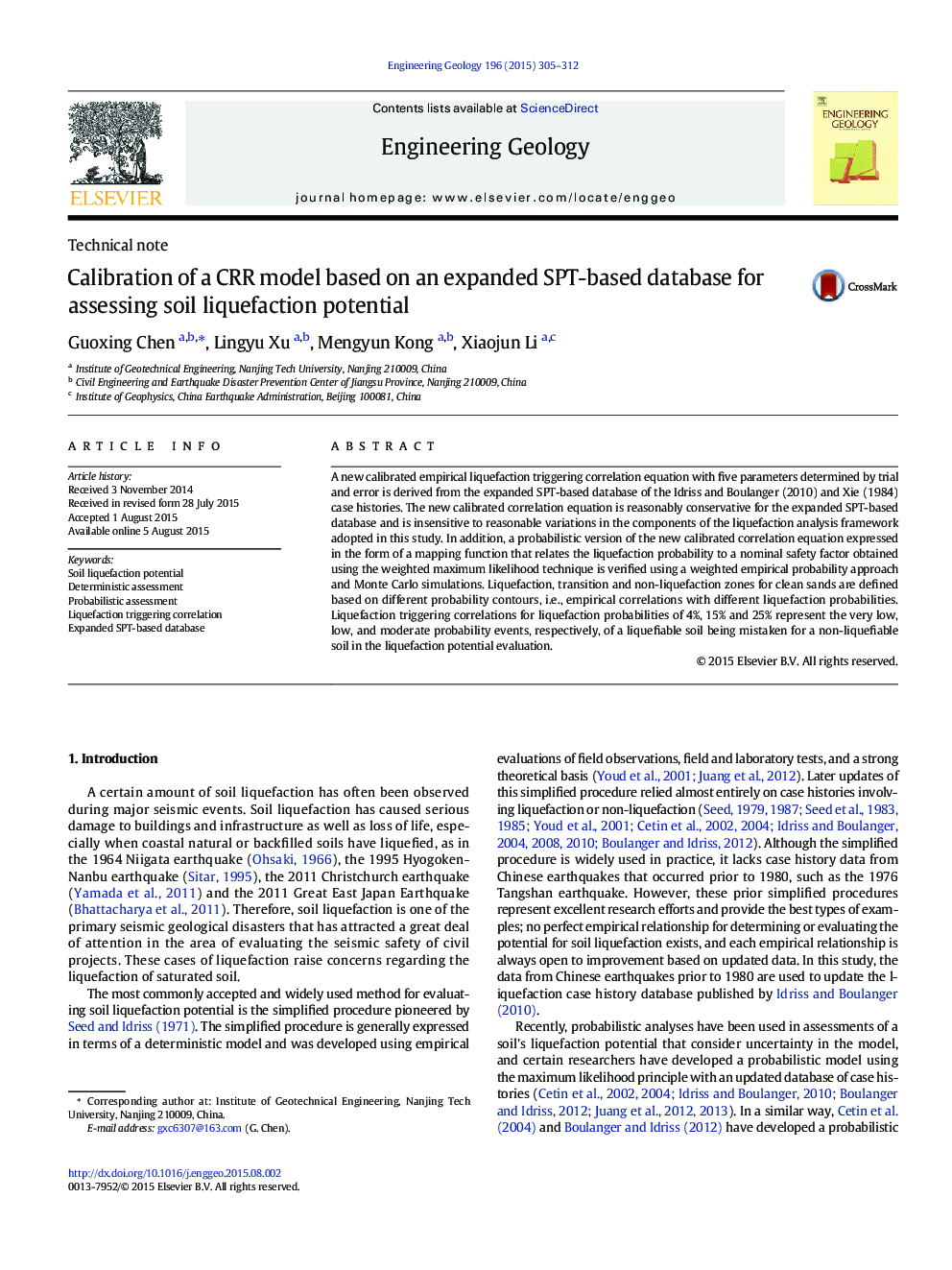| Article ID | Journal | Published Year | Pages | File Type |
|---|---|---|---|---|
| 4743368 | Engineering Geology | 2015 | 8 Pages |
•The Idriss and Boulanger (2010) and Xie (1984) case history databases were combined.•A calibrated liquefaction triggering correlation using the expanded database was obtained.•A probabilistic version of a new calibrated liquefaction triggering correlation was given.•Liquefaction, transition and non-liquefaction zones with the expanded databases were given.
A new calibrated empirical liquefaction triggering correlation equation with five parameters determined by trial and error is derived from the expanded SPT-based database of the Idriss and Boulanger (2010) and Xie (1984) case histories. The new calibrated correlation equation is reasonably conservative for the expanded SPT-based database and is insensitive to reasonable variations in the components of the liquefaction analysis framework adopted in this study. In addition, a probabilistic version of the new calibrated correlation equation expressed in the form of a mapping function that relates the liquefaction probability to a nominal safety factor obtained using the weighted maximum likelihood technique is verified using a weighted empirical probability approach and Monte Carlo simulations. Liquefaction, transition and non-liquefaction zones for clean sands are defined based on different probability contours, i.e., empirical correlations with different liquefaction probabilities. Liquefaction triggering correlations for liquefaction probabilities of 4%, 15% and 25% represent the very low, low, and moderate probability events, respectively, of a liquefiable soil being mistaken for a non-liquefiable soil in the liquefaction potential evaluation.
